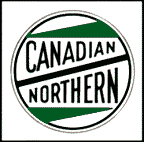| It is currently Thu Jul 31, 2025 10:51 pm |
|
All times are UTC - 5 hours [ DST ] |
 
|
Page 3 of 6 |
[ 85 posts ] | Go to page Previous 1, 2, 3, 4, 5, 6 Next |
|
| softwerkslex |
|
||
|
Joined: Thu Apr 14, 2005 9:34 pm Posts: 2829 Location: Copenhagen, Denmark |
|
||
| SD70dude |
|
|||
Joined: Tue Feb 20, 2018 7:08 pm Posts: 328 Location: Alberta, Canada |
|
|||
| k5ahudson |
|
||
|
Joined: Tue Aug 24, 2004 6:30 am Posts: 769 |
|
||
| k5ahudson |
|
||
|
Joined: Tue Aug 24, 2004 6:30 am Posts: 769 |
|
||
| Great Western |
|
||
|
Joined: Fri Apr 26, 2013 5:56 pm Posts: 445 Location: Ontario, Canada. |
|
||
| Tom F |
|
||
|
Joined: Mon Jul 02, 2018 8:04 pm Posts: 314 |
|
||
| CaliforniaSteamin |
|
||
|
Joined: Tue Jul 03, 2018 7:13 pm Posts: 4 |
|
||
| Great Western |
|
||
|
Joined: Fri Apr 26, 2013 5:56 pm Posts: 445 Location: Ontario, Canada. |
|
||
| QJdriver |
|
||
|
Joined: Sun Sep 05, 2004 9:48 am Posts: 1664 Location: Byers, Colorado |
|
||
| Great Western |
|
||
|
Joined: Fri Apr 26, 2013 5:56 pm Posts: 445 Location: Ontario, Canada. |
|
||
| Overmod |
|
||
|
Joined: Thu May 24, 2012 1:37 pm Posts: 2492 |
|
||
| co614 |
|
||
|
Joined: Sun Aug 22, 2004 5:19 pm Posts: 2701 Location: Sackets Harbor, NY |
|
||
| Kelly Anderson |
|
||
|
Joined: Tue Sep 14, 2004 7:52 am Posts: 2477 |
|
||
| Dave |
|
||
|
Joined: Sun Aug 22, 2004 7:19 am Posts: 6464 Location: southeastern USA |
|
||
 
|
Page 3 of 6 |
[ 85 posts ] | Go to page Previous 1, 2, 3, 4, 5, 6 Next |
|
All times are UTC - 5 hours [ DST ] |
Who is online |
Users browsing this forum: Google [Bot], Google Adsense [Bot] and 125 guests |
| You cannot post new topics in this forum You cannot reply to topics in this forum You cannot edit your posts in this forum You cannot delete your posts in this forum You cannot post attachments in this forum |

